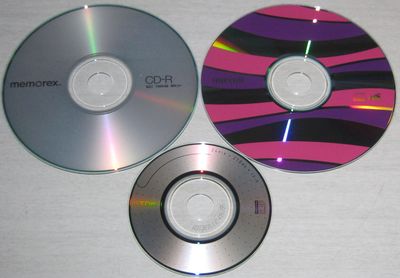Console homebrew communities have always had a precarious relationship with console pirates. The same knowledge and skills useful for creating homebrew programs can usually be parlayed into ripping games and cajoling a console into honoring ripped copies. For this reason, the Dreamcast homebrew community tried hard to distance itself from pirates, rippers, and other unsavory characters.

Funny how times change. While I toed the same line while I was marginally a part of the community back in the day, now I think I’m performing a service for video game archivists and historians by openly publishing the same information. I know of at least one solution already. But I think it’s possible to do much better.
Pre-existing Art
Famed Japanese game hacker BERO (FFmpeg contributors should recognize his name from a number of Dreamcast-related multimedia contributions including CRI ADX and SH-4 optimizations) crafted a program called dreamrip based on KOS’s precursor called libdream. This is the program I used to extract 4XM multimedia files from Alone in the Dark: The New Nightmare.
Fun facts: The Sega Dreamcast used special optical discs called GD-ROMs. The GD stands for ‘GigaDisc’ which implied that they could hold roughly a gigabyte of data. How long do you think it takes to transfer that much data over a serial cable operating at 115,200 bits/second (on the order of 11 Kbytes/sec)? I seem to recall entire discs requiring on the order of 27-28 hours to archive.
If only I possessed some expertise in data compression which might expedite this process.
KallistiOS’ Unwitting Help
The KallistiOS (KOS) console-oriented RTOS provides all the software infrastructure necessary for archiving (that’s what we’ll call it in this post) Dreamcast games. KOS exposes the optical disc’s filesystem via the /cd mount point on the VFS. From there, KOS provides functions for communicating with a host computer via ethernet (broadband adapter) or serial line (DC coder’s cable). To this end, KOS exposes another mount point on the VFS named /pc which allows direct access to the host PC’s filesystem.
Thus, it’s pretty straightforward to use KOS to access the files (or raw sectors) of the Dreamcast disc and then send them over the communication line to the host PC. Simple.
Compressing Before Transfer
Right away, I wonder about compiling 3 different compression libraries: libz, libbz2, and liblzma. The latter 2 are exceptionally CPU-intensive to compress. Then again, it doesn’t really matter how long the compressor takes to do its job as long as it can average better than 11 Kbytes/sec on a 200MHz Hitachi SH-4 CPU. KOS can be set up in a preemptive threading mode which means it should be possible to read sectors and compress them while keeping the UART operating at full tilt.
A 4th compression algorithm should be in play here as well: FLAC. Since some of these discs contain red book CD audio tracks that need archival, lossless audio compression should be useful.
This post serves as a rough overview for possible future experiments. Readers might have further brainstorms.


